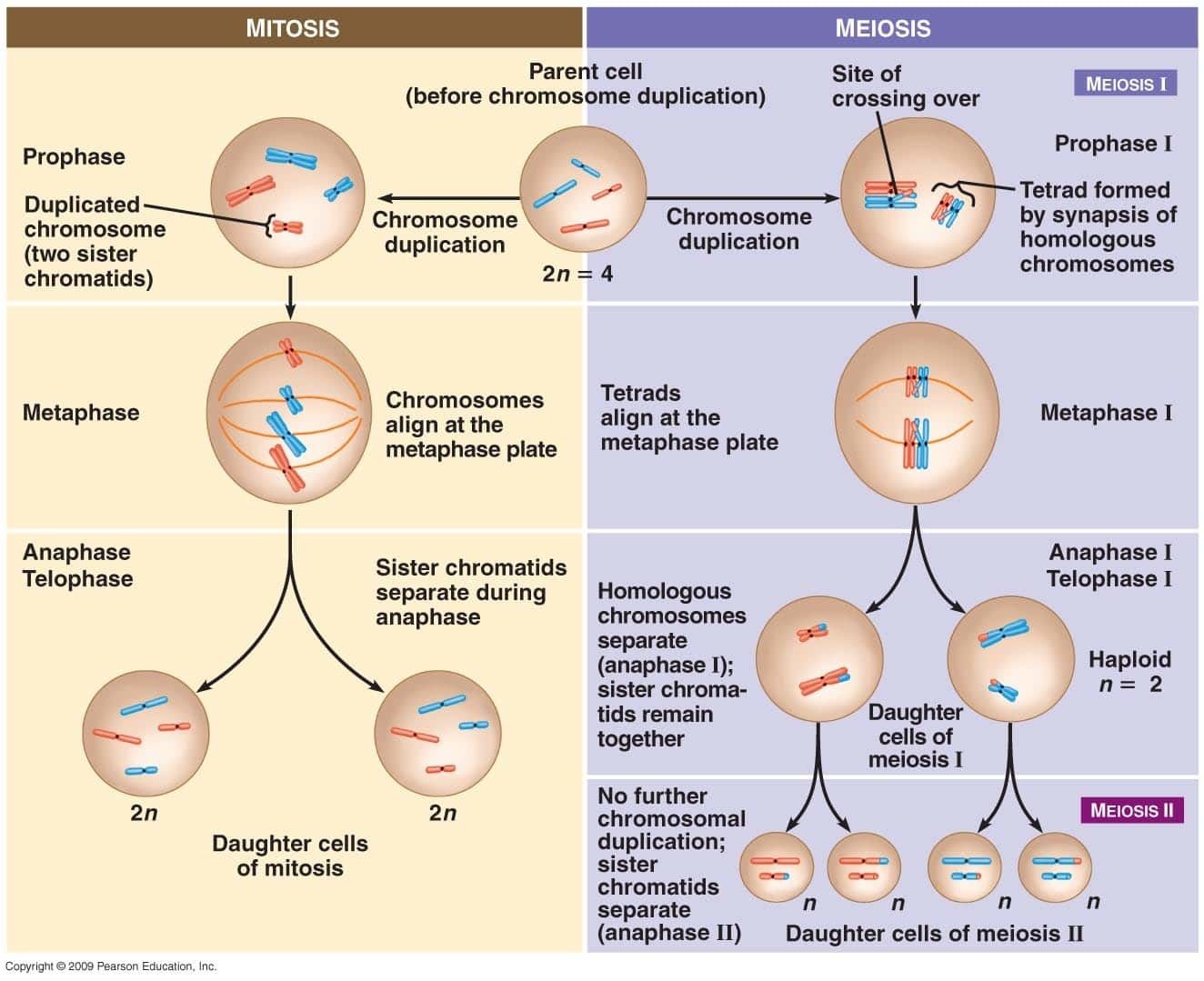

Meiosis I and II, as well as mitosis, have the same five five stages: prophase, prometaphase, metaphase, anaphase, and telophase. The cell produces more proteins, such as microtubules. This stage is the final preparation for meiosis. It is important to note that both a lone chromatid and a pair of sister chromatids are considered one chromosome thus, the doubling of chromatids does not affect the number of chromosomes, or the ploidy. Each chromosome, instead of consisting of only one chromatid, now has a pair of sister chromatids, which doubles the amount of DNA in the cell while retaining the original number of chromosomes (2n, or diploid). In this phase, the chromosomes are replicated.

In the G phases, G stands for "gap." During the G 1 phase, the cell produces the proteins necessary for replicating DNA.

The stages are the G 1 phase (the first "gap" phase), the S phase, and the G 2 phase (the second "gap" phase). This is the phase in which all the "building blocks" for meiosis are prepared. In premeiotic interphase, chromosomes are duplicated and other proteins are produced that are needed for meiosis.

Cytokinesis splits the chromosome resulting into four daughter cells, all haploid. Telophase II: nuclear membranes form around each set of chromosomes and the chromosomes uncoil to form chromatin fibre. Telophase I: Separates into two daughter cells, both haploid. Spindle fibers attach to kinetochores, to which they attach when separating sister chromatids.Īnaphase I: Homologous pairs separate, with two chromatids going to each of the two poles.Īnaphase II: Chromosomes divide at the centromeres, with one chromatid going to each of the two poles. Metaphase II: Chromosomes align single file. Metaphase I: Homologous chromosomes align side-by-side, in random order (either paternal or maternal chromosome align to each side). Prophase II: Chromatin condenses into chromosomes. Has five substages: Leptotene, Zygotene, Pachytene, Diplotene, and Diakinesis. Genetic recombination occurs (crossing-over). Prophase I: Chromosomes form a tetrad, joined at the chiasmata. In some species, starts with interkinesis or Interphase II, which lacks an S phase as the DNA has already been replicated, and does not result in chromosome duplication, instead of interphase. No DNA replication takes place in Meiosis II.įeatures G1 phase, S phase, and G2 phase genetic replication occurs. 85%-95% of total time for both divisions is spent in prophase I. Homotypic or equational division (haploid cells to haploid cells) Heterotypic or reduction division (diploid cell to haploid cells) In both meiosis I and II, cytokinesis occurs, and there are two daughter cells per parent cell.Ĭomparison chart Meiosis I versus Meiosis II comparison chart Meiosis II is generally regarded as being very similar to mitosis, except for the presence of two parent cells, instead of only one. Meiosis I, also produces cells in which the chromosomes are still whole and are composed of two chromatids on the other hand, the separation of sister chromatids occurs in meiosis II. Meiosis II, being an equational division, does not feature a change in ploidy it instead produces haploid daughter cells from haploid parent cells. The first meiotic stage is also an example of reductional division, wherein a change in ploidy takes place as a diploid parent cell forms haploid daughter cells. Genetic reassortment occurs during meiosis I. Meiosis forms gametes, or sex cells, by rearranging and mixing genetic material, which ensures genetically-distinct progeny (children) and sufficient variety in the gene pool.īecause meiosis begins with one diploid parent cell and ends with four haploid daughter cells, two division stages are needed: these divisions are called meiosis I and meiosis II. Meiosis is a form of cell division that usually occurs only once in the lifetime of a eukaryote, and is vital to the sexual reproduction of eukaryotic organisms. Diffen › Science › Biology › Cellular Biology


 0 kommentar(er)
0 kommentar(er)
